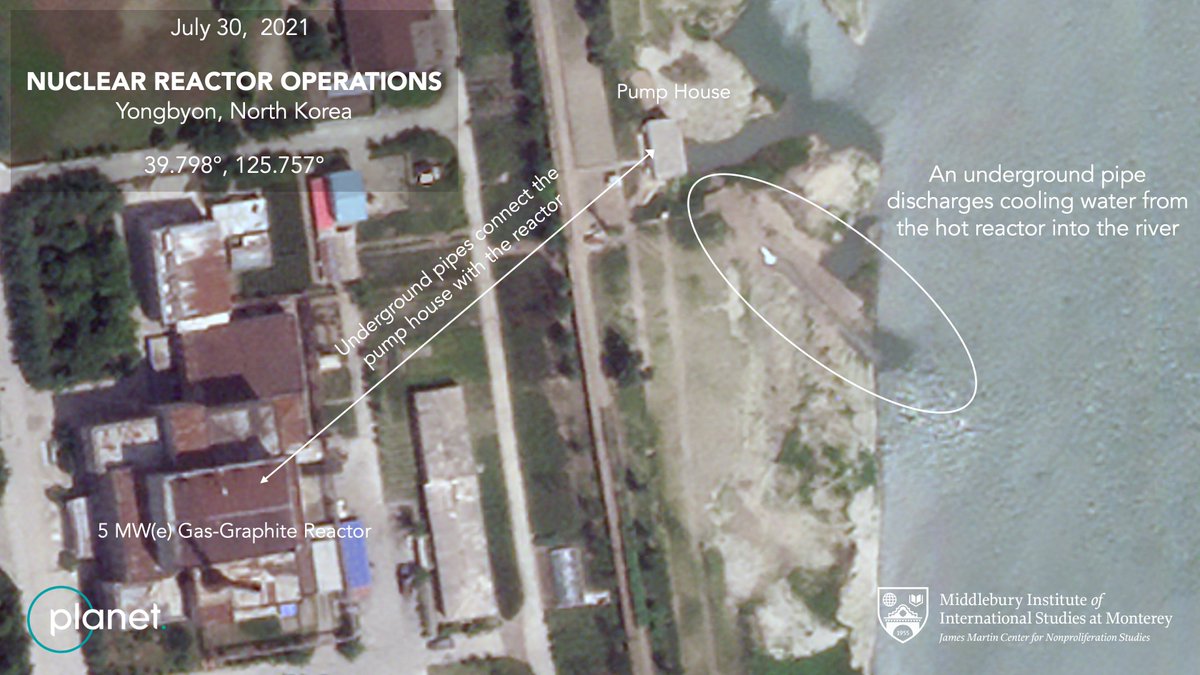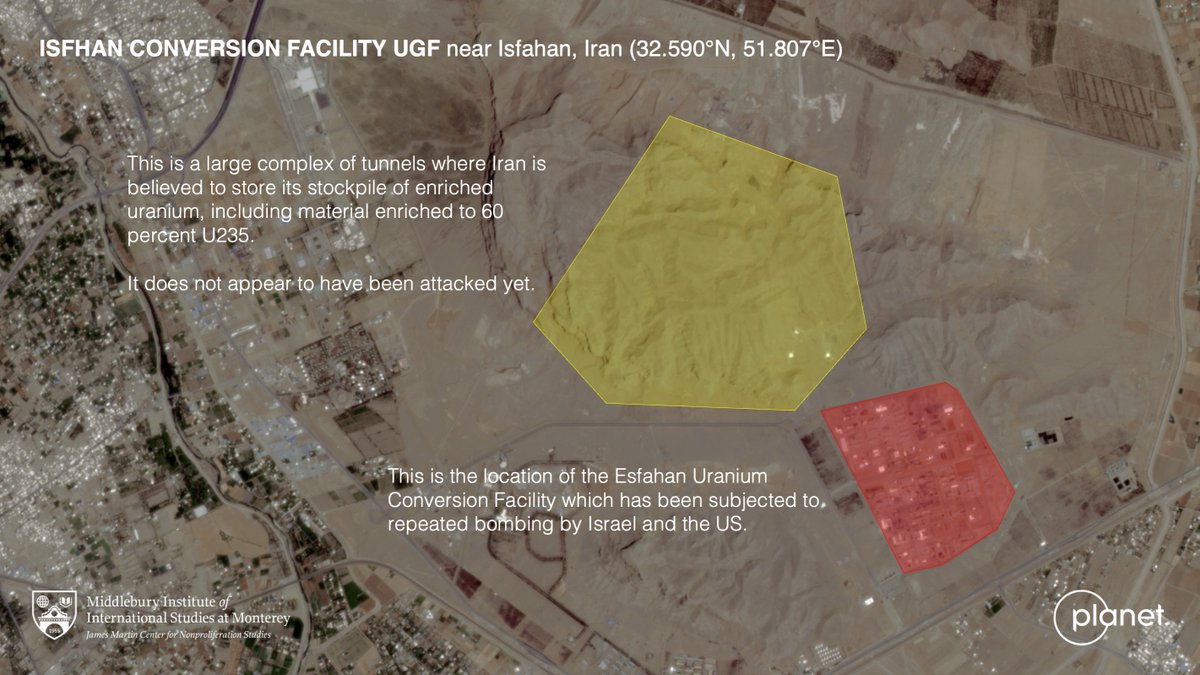The @iaeaorg announced that North Korea restarted its 5 MWe gas-graphite plutonium production reactor at Yongbyon in July. A short thread with some satellite images on open source monitoring of nuclear reactor operations. 

The @iaeaorg observed that North Korea was discharging cooling water into the river. Reactors get very hot when they operate. North Korea cools the reactor core with CO2 gas (hence "gas-graphite") and then uses water in a secondary cooling loop. 

If North Korea runs the reactor, it must dump hot water in the river or the core will melt. Water discharge signaling operations is what the @iaeaorg and the open source community saw over the summer. @planet got an especially pretty picture of water discharge on July 30. 

But there are lots and lots pictures showing the reactor discharging water. Between @planet, @Maxar and @Airbus, we have 11 clear images in July and August. All but one show water being discharged. That suggests that reactor is operating more or less continuously. 







North Korea originally used a cooling tower for the secondary cooling loop, but the Bush Administration insisted North Korea blow it up in 2008 because they wanted a photo op. That's not me being cynical, it's what officials told @GlennKesslerWP!
washingtonpost.com/wp-dyn/content…

washingtonpost.com/wp-dyn/content…


Of course a cooling tower is only one option. When North Korea attempted to covertly build a similar reactor for Syria near Al Kibar (Deir Ezzor), it opted for an underground cistern and pump houses. That's also what North Korea has now done at Yongbyon 



North Korea built one pump house in 2013 next to the Experimental Light Water Reactor (ELWR), then a second one in 2018 where the water is discharging now. We still have questions about how the cooling loops at Yongbyon for the two reactors relate to one another.
But the big take away here is North Korea is running the reactor and isn't particularly trying to hide it.
@38NorthNK has a nice write-up of the site using an August 25 image from @Airbus.
38north.org/2021/08/north-…
38north.org/2021/08/north-…
@dandeluce also wrote a story for @NBCNews based on our analysis and an image from @planet.
nbcnews.com/politics/natio…
nbcnews.com/politics/natio…
• • •
Missing some Tweet in this thread? You can try to
force a refresh

















